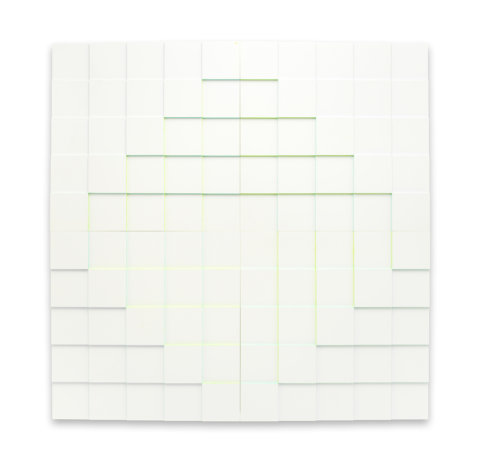Exhibition Shizuko Yoshikawa

- MAMCO Musée d'art moderne et contemporain
10, rue des vieux Grenadiers
1205 Geneva
Switzerland
- Julien Fronsacq
- Shizuko Yoshikawa und Josef Müller-Brockmann Stiftung
Shizuko Yoshikawa (1934–2019) was born in a small city in southern Japan and first studied English, architecture, and design. Hired as translator for the “World Design Conference” of Tokyo in 1960, she meets the directors of the Hochschule für Gestaltung, a Bauhaus-style design school founded in the aftermath of the Second World War in the German city of Ulm, where she went to study for two years.
In 1962, she joins the studio of Josef Müller-Brockmann, who has established himself as the main theoretician and teacher of the grid systems in graphic design. There, she is in charge, with Gudrun von Tevenar, to develop the design of the “Education, Science and Research” Pavilion of the National Exhibition of 1964 in Lausanne. She thus meets Max Bill, Camille Graeser, and Verena Loewensberg, and starts to engage with Concrete art, as it was defined by these artists since the end of the 1930s.
Yoshikawa’s early works drew on this rational model and, in 1973, she created a large-scale decorative piece for a building: a series of cut, geometric concrete reliefs with modules measuring up to six meters in length. In 1974, Yoshikawa held a solo exhibition in Rapperswil, the first of many such shows hosted in Switzerland and beyond. Four years later, a solo show in Tokyo included a text written by Max Bill. And in 1980, the Kunsthaus Zürich exhibited a series of her reliefs. She also contributed to the exchanges between Switzerland and Japan, exhibited at the Minami gallery in 1978 (known for its commitment to environmental and kinetic art), and organized an exhibition at the Art Information Center of Osaka in 1981.
Although Yoshikawa is often associated with the Zurich Concrete artists, her distinctive body of work sets her apart from the orthodoxy espoused by that group. Her artistic practice is best encapsulated by her reliefs, which use right-angled geometric forms. Despite staying true to reductionist tradition, she adopted a varied formal language. Her black and monochrome relief patterns take on a different quality under the effect of light, while Transformation saw the artist use a wide palette of colors to produce a dynamic effect. Yoshikawa’s Farbschatten (colored shadows) series comprises a number of white geometric reliefs whose patches of color appear indirectly through a process of reflection. In a break with the non-illusionist rationality of Concrete art, her practice draws on the perceptive effects produced as the observer views the works from different angles—and on their interplay with the light in the exhibition space. A prime example is her Weisse Mitte series of paintings: geometric pieces with the center left deliberately white, fashioning a negative space that transforms the grid pattern into a dynamic, evenly spaced matrix. Yoshikawa, who was active until the late 2000s, produced a body of works that appear to project out from the wall, creating a spatialized experience that speaks to the very essence of centrifugal art.
- Exhibition curated by Julien Fronsacq, with the support of the Shizuko Yoshikawa und Josef Müller-Brockmann Foundation
More infos here: MAMCO Genève – Expositions – Shizuko Yoshikawa
